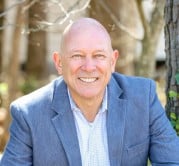What you see is what you get
Be an authentic leader (and person!)

In the early 1980s, the phrase “what you see is what you get” was abbreviated to “WYSIWYG” by computer users who sought a term to describe software that accurately reflects the appearance of the finished product. I use this acronym to describe the type of leader and person I strive to be—authentic, complete with wrinkles, quirks and a cool haircut (IYKYK, er, if you know, you know).
I could spend time here quoting all the leadership gurus who have pontificated on being an authentic leader, but I won’t. Instead, let me share a lesson I learned early in life about trying to compartmentalize my life based on the “role” I was playing. I tried my best in my late 20s to wear my deacon hat at church or my husband hat at home, and then when the kids showed up, I would put on my dad hat. I tried to keep each role separate—and it was exhausting! I spent so much energy working to keep my life compartmentalized that I couldn’t play at a high level for very long without feeling completely drained.
After trying for several years to keep every role in its place, I was done role switching. In the mid-1980s, I latched on to this idea of WYSIWYG. What you see is what you get. I was just going to be Bill. The freedom this brought to my leadership game and for me as a person was immense!
Several years later, at the Center for Creative Leadership (CCL) in Colorado Springs, Colorado, I got the science behind the WYSIWYG mantra I had adopted. Bottom line: decades of research done at CCL have found that leaders are most effective when they’re able to lead authentically. It’s called Holistic Leadership, and it consists of four facets: self, career, family and community.
In a nutshell, this concept really allows you to understand what gives you energy (self), identify your key supporters (family), determine if you’re making a difference in people’s lives (career) and empower you to serve others (community). There’s more to each facet, but you get the idea.
Why is being an authentic leader so important? First, authenticity means being vulnerable and, therefore, willing to listen to others and be open to feedback. It creates a learning mindset. I believe it also promotes an abundance mentality over a scarcity mentality.
Second, it helps you spend the energy on things and people that matter to you and to your team (or family and friends). You become mindful of those “energy vampires” that suck the life right out of you and those who pour into you and energize you.
Last, it’s a productivity tool. Authenticity attracts people, and this is where relationships and results come into play. To be an effective leader, you need both tools in your toolbox. The relationship part takes openness, vulnerability, and the guts to apologize when necessary. People love working for those whom they know are bringing their whole selves to their leadership roles. Those individuals are better able to integrate their personal values and core purposes into their everyday actions and provide the support necessary to those they lead.
Those working for holistic leaders are more willing to provide the discretionary effort of a fully engaged team member, driving results for the team and the organization. Why? Because they know their leader understands they are not just cogs in the wheel of the grinding organization—they are holistic people with families, problems, goals and dreams.
It’s time to get real and be the real deal. Let those you lead know that WYSIWYG!

